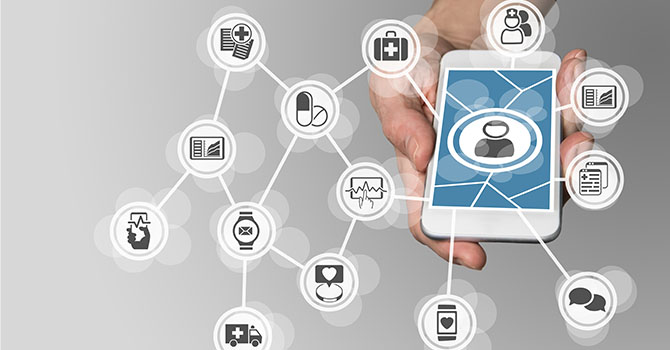Most Patients Wary, Unaware of Benefits of Using Health Portals

New Research from Denise Anthony
Two-thirds of patients who visited a doctor in 2017 did not use a health portal that could help improve their health in the long run, according to a new study by the University of Michigan.
Health portals—secure online websites that give patients 24-hour access to health information—can enhance patients' engagement in their own health, said lead author Denise Anthony, professor of health management and policy at U-M's School of Public Health.
"They ask more questions of doctors, they become more engaged in knowing about and keeping themselves healthy," she said. "Given these benefits, we wanted to look at who isn't using a patient portal. To make sure these technologies benefit all people, we first have to find out who is and is not using them."
For the study, published in the December issue of Health Affairs, researchers used data from the nationally representative 2017 Health Information National Trends Survey, limiting the study to those who had insurance and who had seen a doctor in the past 12 months.
Of the roughly 2,300 respondents, 63 percent reported not using a portal the previous year. Nonusers were more likely to not have been offered access to a portal. They also tended to be male, 65 or older, on Medicaid, lack a regular provider and have less than a college education. Of those using a portal, 95 percent had been offered access to one. However, 41 percent of those offered access did not use a portal.
Of those not using portals, the study found no demographic difference in who was likely to cite a technological barrier of access to the internet as the reason for not using a portal.
Researchers found that:
- Medicaid and Medicare beneficiaries were significantly more likely to say they didn't want to use a portal because they prefer to speak directly to a provider.
- Patients older than 40, and some racial and ethnic minority groups, were more likely than younger and white patients to report concerns about security and privacy.
- Hispanics and people older than 50 were less likely to report they had no need to access a portal.
Anthony said the study suggests that disparities in portal use appears to be less about access to technology infrastructure and more about skills and comfort using technology.
"It will require education as well as technological designs that enable patients to communicate with providers in acceptable ways," she said.
Policymakers could provide incentives to health care providers to better communicate and spend more time with patients, particularly disadvantaged patients, both in person and online, Anthony said.
Another policy recommendation is to encourage providers to target disadvantaged patients, while changing technological features to improve portals' usefulness. With such changes, portals could actually diminish existing health disparities, she added.
Co-authors included Celeste Campos-Castillo and Paulina Lim of the University of Wisconsin-Milwaukee.
Anthony will discuss the research at a Health Affairs briefing on telehealth at 9 a.m.-1 p.m. Tuesday, Dec. 4, at National Press Club in Washington, D.C. To register: myumi.ch/LrEX7
Follow live tweets from the briefing @Health_Affairs, and join the conversation with #telehealth.
Abstract: myumi.ch/6jE1N
Learn More about Health Management and Policy at U of M.
